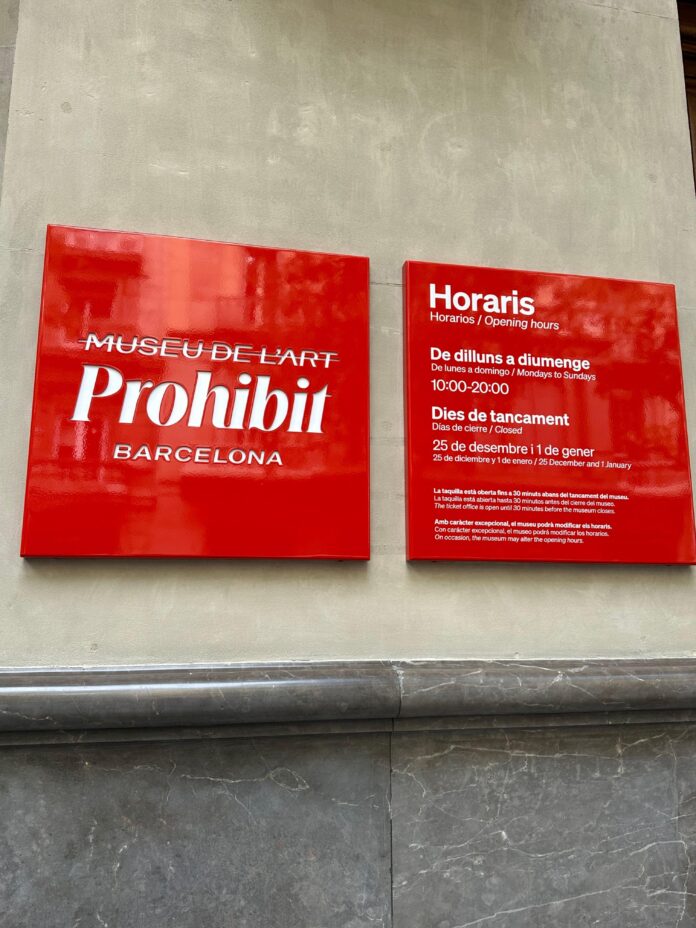The world’s first museum of censored art—including headline-hitting banned works by artists such as Ai Weiwei, David Wojnarowicz and Abel Azcona—is due to open in Barcelona later this month located in an early 20th-century building designed by the architect Enric Sagnier. The new institution, known as the Museu de l’Art Prohibit, was founded by the Catalan journalist and businessman Tatxo Benet and launches 26 October.
“The Museu de l’Art Prohibit collection brings together more than 200 works that have been censored, prohibited or denounced due to political, social or religious reasons,” the museum website says. “The collection comprises a diverse range of artworks, including paintings, sculptures, engravings, photographs, installations and audiovisual pieces, largely created during the second half of the 20th century and throughout the 21st century.” The collection and full list of works are listed on the website.
Tatxo Benet’s interest in censored art was sparked by the work Political Prisoners in Contemporary Spain by the Spanish artist Santiago Sierra. Benet bought the work—which comprises 24 pixelated portraits of politicians and activists—at the Arco fair in Madrid in 2018.
The work was withdrawn from display before the VIP opening by officials at Ifema, the organisation that runs the fair exhibition centre. Benet told The Art Newspaper at the time: “When there is an act of censorship, two things happen: an artist’s freedom is curtailed but also the people’s freedom to interact with the piece of art is restricted.” Sierra’s work is currently on loan to the Museum of Lleida.
The Museu de l’Art Prohibit also houses Eugenio Merino’s controversial work Forever Franco (2012)—a sculpture of the former Spanish dictator Francisco Franco standing in a fridge—and Ines Doujak’s installation Not Dressed for Conquering -HC04 Transport (2010) which shows a former Spanish king in a sexual act with a dog.
Ai Weiwei’s piece Filippo Strozzi in Lego (2016) is also included (Lego briefly refused to supply materials for the Chinese artist’s show in Melbourne in 2015). Meanwhile David Wojnarowicz’s video A Fire in My Belly (1986-87), a centrepiece of the new museum’s display, was withdrawn from the National Portrait Gallery (Smithsonian Institution) in Washington DC after conservative politicians protested against the work that shows ants crawling over a crucifix.
The museum is not just limited to 21st-century works. Benet’s collection also includes Pablo Picasso’s Suite 347 (1968), which was banned by the Art Institute of Chicago in the 1960s, and Goya’s satirical series of engravings, Caprichos (The Caprices, 1797-99).

















![The Art Angle Podcast: Marina Abramović on How Her Artistic Method Can Change Your Life [Re-Air]](https://usaartnews.com/wp-content/uploads/TMXMv8aRvG8eexP1TrZki3Iut1QIbnYXRzZZcwty-80x60.jpg)







